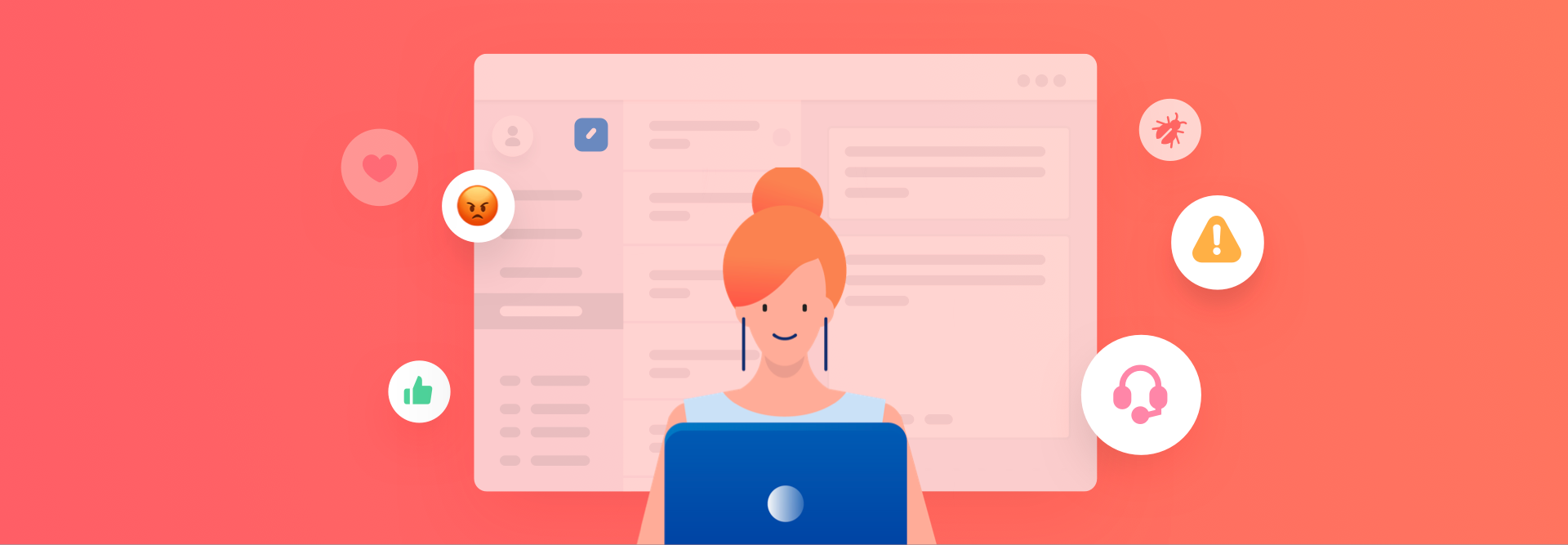“80% of your company’s future revenue will come from just 20% of your existing customer base.”
When it comes to lifecycle marketing, it may appear to be a very linear approach. But, in reality— it’s literally a complex and challenging process.
In every business, a whole customer journey has been assessed, and steps and procedures have been adapted accordingly. This further helps to compel customers to consistently purchase from them and stay longer.
In this complete guide, we will take you on a tour of lifecycle marketing and will cover each and every stage along with examples. Let’s check what we’ll cover further:
- What’s Lifecycle Marketing
- Stages of Lifecycle Marketing
- Strategies of Lifecycle Marketing
- Advantages of Lifecycle Marketing
- Campaigns of Lifecycle Marketing
- Example of Lifecycle Marketing
- Enhancing Profits with Lifecycle Marketing
Let’s dive in!
What’s Lifecycle Marketing
A customer passes through various stages when they are engaged with any company. And, each stage of the buyer's journey influences lifecycle marketing.
Further, it includes everything from new clients entering your marketing funnel, recurrent customers, and terminated customers.
To create appealing marketing campaigns, successful lifecycle marketing uses data science to identify and anticipate when customers will achieve critical lifecycle milestones.
It further takes some crucial elements into account such as level of engagement level, purchase frequency, and lifetime value prediction.
Stages of Lifecycle Marketing
Let’s discuss this lifecycle marketing funnel stages in detail:
1. Awareness
The brand awareness stage comes at the top of the marketing funnel. As the name implies, customers build general familiarity with your products or services via several channels. It includes word-of-mouth, social media channels, and more.
In simple words, customers begin to establish relationships with your company or brand at this time.
2. Engagement
This is the next stage where the potential customers start the engagement process with your brand or business. When they like your products or services, they tend to learn more about you.
As a result, they take the initiative of visiting your website, following you on social media, and signing up for your email lists, blogs, or newsletters.
3. Evaluation
This is the third stage that every potential customer passes through. In other words, it is the point at which a decision is made. This phase is used by potential customers to decide whether to buy from you or one of your competitors.
As a result, you must ensure that you stand out from the crowd and provide the highest level of service to your customers.
Additionally, provide them with precise information, allowing them to compare your features and products, as well as their worth and cost. It will aid buyers in selecting your brand.
4. Purchase
Bingo! Once your audience reaches this stage— you earned a new customer. Moreover, you have to make sure that you offer your full support to customers at this stage.
According to research, more than 80% of buyers require some form of assistance while making a purchase. Also, more than half of buyers will reject a transaction if they do not receive prompt replies to their questions.
Interestingly, live chat services are one of the options to address this need. The real-time, customized solution can provide your clients with the help they need to have a positive experience while reducing the workload on your staff.
5. Support
Statistics show that more than 70% of customers opt to stay loyal to brands based on the level of customer care they receive.
Undoubtedly, gaining new clients is more challenging than keeping the old clients. As a result, providing customers with high-quality products and services with broad support is vital.
Moreover, every customer care transaction should persuade the buyer that you want to build a connection with her, not merely induce them to purchase your products.
6. Bonding/Loyalty
Congratulations! Your buyer list has been updated with a new member. Customers only get to this point if they've been delighted by your product or service.
Furthermore, it is your job to maintain providing exceptional customer service. It will assist you in forging a deep bond with them.
Despite the fact that lifecycle marketing appears to be a simple operation. However, when done repeatedly, it is effective.
Remember that you can't just neglect a customer after they've made a transaction. If you work hard to create a comprehensive plan, it will be much easier to meet and exceed your marketing, sales, and company objectives.
Strategies of Lifecycle Marketing
It's critical to have a robust lifecycle marketing strategy. Let’s discuss all important strategical stages and their related aspects:
Discovery Stage
The first and most important stage is to determine who your target audiences are. For that, you need to know and understand certain elements. It contains information about their needs, interests, pain spots, motivations, and more.
Moreover, this will also assist you in developing a rapport with your audience so that you can filter and categorize them.
When it comes to defining your target audience, establishing your divisions and creating accompanying buyer personas can be extremely helpful. You might wish to add the following information in your personas:
- Age
- Priorities
- Goals
- Income/revenue
- Job title
- Challenges
- Products desired
- Interests
- Industry
- Pain points
Create a content plan that will resonate with their demands and is matched with their search activity once you've created customer personas.
Examples include in-depth guides, long-form blog entries, and graphic content pieces such as downloadable templates, data visualizations, and high-value lead magnets.
Remember that you're trying to build a relationship with your existing and potential customers. Therefore, you need to consider how you may add value and earn trust.
Following we have provided some tips and tricks to create awareness among the audience and help you to reach them
Education and Engagement Stage
Your audience wants to learn more about your products and services as they progress from the discovery stage. It's crucial for them because they have to assess whether or not you're worth it. And, this stage is the education and engagement stage.
Prospects want to know everything before making a purchase. It's also your responsibility to respond to any and all questions or concerns. Moreover, you should answer those queries and objections as comprehensively as possible in your digital marketing strategy.
Below we have listed some effective education tactics to do so:
Check the following engagement strategies table:
Conversion or Purchase Stage
This is the most critical stage for any business. Because you don’t want to lose a customer after putting in an enormous effort. Therefore, you have to make sure to reduce any roadblocks or friction from this stage.
In simple words, you should make the checkout process simple and painless. Once your customer reaches the checkout page, that’s your final chance to grab them as your customer.
In order to do so— Ask only for important information. If you overload them with tons of questions, they might get frustrated and leave.
As previously stated, implement live chat so that if a customer has a query, they don't have to leave the page. To motivate clients to complete their purchases, send them abandoned cart emails.
Following we have discussed some crucial tactics that will persuade customers to purchase from you. Check out:
According to research, tailoring the consumer experience increases conversion rates by approximately 8%. So, rather than treating a potential customer as a number that helps you reach your revenue targets, attempt to make them feel important.
Post-Purchase Stage
Your marketing objective is to improve customer retention by strengthening current customer connections, deepening customer engagement, and increasing customer retention. Customers should have a reason to stick with your brand.
Fortunately, you can achieve this by using a Voice of the Customer (VoC) program to collect input. Here are a few suggestions for increasing brand affiliation:
Furthermore, concentrate on making consumers feel important and appreciative for the opportunity to work with them. Customers are more inclined to return for repeat purchases if they feel respected and valued.
Referral Stage
We finally reached the loyalty stage. At this point, it's all about loyalty towards the end of the lifecycle marketing process. Moreover, you can also give pleased customers the boost to share their experience or refer your business to others. This works as an effective key in turning them into advocates.
With this procedure, you can generate leads and enhance sales and revenue as well. Make sure to inquire about customer feedback on Google, Facebook, and other relevant third-party sites. Additionally, develop a referral program where customers are rewarded for bringing their family and friends to your company.
Here’s a pro-tip:
Initiate by creating a social media community around a brand-related hashtag and regularly spotlighting user-generated content. You can also establish a client loyalty program and maintain regular contact with them.
The following are some strategies for cultivating this form of loyalty:
Ultimately, customers who trust a company are 95% more likely to stay loyal to it. However, it’s entirely up to you how you keep and meet your customer expectations.
Remember that customer feedback works wonders for business. So, make sure to request them to provide you with feedback.
Advantages of Lifecycle Marketing
The fundamental goal of a lifecycle marketer is to convert prospects into customers. Also, turn existing clients into long-term brand champions who buy from you on a regular basis. Not just that but they also refer your business to others as well.
However, if you truly want to be successful with this strategy, then lifecycle marketing can assist you in certain aspects. It includes cutting acquisition costs, providing targeted marketing to customers, and raising conversion rates, lifecycle marketing can assist you.
Following we have listed some of the crucial benefits associated with lifecycle marketing. Let’s check them:
1. Saves Time and Money
Focusing on building relationships with existing clients is more cost-effective than pursuing new customers.
Moreover, existing customers have already demonstrated an interest in your company and are connected with your brand. Therefore, it's in your firm's best financial interests to maintain delivering relevant offers that will keep them engaged.
Focusing on what will urge existing consumers to progress through the purchasing journey (e.g., promoting up-sells and additional features) will increase brand loyalty while also saving time and money.
2. Enhance Customer Lifetime Value
Although, not every consumer will become a dedicated brand champion. Retaining customers through the lifecycle rather than forgetting about them after their first purchase enhances your chances significantly.
Maintaining clients’ active and engaged benefits businesses when compared to one-time purchases. It is generally because recurring consumers produce 3-7 times the revenue per visit.
Furthermore, knowing how your users progress through the lifecycle allows you to identify any trouble spots where customers become stuck or abandon, indicating where you should devote more resources and attention.
3. Makes Customers feel Important and Unique
Customers feel individually important, valued, and appreciated when marketing approaches are customized for them.
Lifecycle marketing clearly signifies that you're making a consistent effort to maintain the relationship with your prospects and existing customers.
Furthermore, companies who place a premium on the customer experience earn 60% more than their competitors. Unfortunately, 63 percent of the time, customers leave because they feel devalued or disregarded.
Therefore, it is your responsibility to maintain a strong relationship with your customers and make them feel valued and important.
Campaigns of Lifecycle Marketing
It can be difficult to create advertisements at each stage of the lifecycle marketing. However, a successful campaign does not have to be complicated.
Begin by determining the objective or goals of your marketing campaign. You can try to acquire new consumers, keep current customers, raise customer lifetime value, develop loyalty, engage lapsed customers, or boost customer lifetime value.
Check lifecycle marketing stages campaigns:
Awareness Stage
We searched for ‘best online travel advisor in India’ on Google. A number of websites, blog posts, reviews, compare prices, and other elements popped on the first page of the search. Of course, you can check, learn, and select which suits you the best.
Engagement Campaign
As we read a few travel blogs and want to explore more. The website will next display a screen requesting that you join their email list. They already know you're interested in traveling and want to learn more about it.
Conversion Campaign
Once you decide to move forward with your traveling via travel websites. They will show some travel packages that you might find suitable. It also shows flights, hotels, and other elements as well. Eventually, when you decide on your package— it will direct you to the payment page.
Retention Campaign
When you finally book your travel, you will receive a confirmation email on your subscribed email address. It will summarize all details from payment hotel details, flight details, cancellation policies, and more. And, later you will receive information on other travel places in your email that you may find hard to resist.
Loyalty Campaign
Once you have a positive experience with the decided travel advisor. You may share your experience with your families, colleagues, and friends. Moreover, a travel advisor may ask you to post reviews and photos of your traveling to share with other customers as well. This shows customer’s loyalty towards the businesses.
Example of Lifecycle Marketing
Check the following ‘UBER’ example of lifecycle marketing:
- Awareness: When a buddy tells you about Uber, their favorite ride-sharing app, you go to the app store and download it to your phone.
- Activation: You launch the app, fill out your profile, and link a credit card to your account for future payments.
- Conversion: You place your first transportation request and pay for the service.
- Retention: You request additional rides and load money into your Uber Eats account.
- Referral: You tell your friends about your positive Uber experience and encourage them to check it out.
Enhancing Profits with Lifecycle Marketing
According to Gartner’s research, 20 percent of a company's existing clients account for around 80 percent of future income. Customer retention is crucial to a company's long-term success.
Moreover, Customers are more likely to make repeat purchases if marketing methods that enhance loyalty through customer lifecycle interaction are implemented.
If you're looking for ways to improve complete lifecycle marketing, here's a quick list of suggestions:
- When someone visits your website for the first time, try to acquire contact information by giving them the choice to sign up for email updates. This might help you gain brand awareness and persuade customers to make their first purchase on your website
- Keep records of the percentage of customers that revisit your site to make additional transactions. This type of information will help evaluate customer loyalty. Compare new versus returning customers to determine the percentage of repeat buyers
- Share email newsletters with clients even after they've made a purchase. This will assist customers to remember your brand and think of it when they need to make a purchase in the future
- Calculate the number of money clients spend on repeat purchases. If you notice a tendency toward lesser purchases, try experimenting with loyalty rewards to boost spending
How Deskera Can Assist You?
Whether you are a sales manager or running your own business, there are tons of duties and responsibilities that you have to fulfill. Using the Deskera CRM system, you can manage your contacts, leads and sales deals. You can use the CRM system to manage all customer data and manage your leads, sales negotiations and deals.
Doing so will help you to save the time taken in transferring customer data between the different systems. Having a good CRM system will help you manage your financial and sales reports and be prepared to kick-off your meetings.
Deskera can also assist you with real-time updates about your business like cash flow status, customer satisfaction, inventory management, sales, purchases, purchase orders, customer tickets, customer satisfaction, managing leads, revenues, profit, and loss statements, and balance sheets.
Moreover, it would also help in integrating sales methodology across different platforms onto one system so that you have a consolidated list for email campaigns, leads management, and sales pipeline to mention a few.
It will also help you to sync between your orders, payments, taxes, refunds, product variants, sending out invoices and reminders, facilitating invoice management, and even undertaking follow-ups and advertisement campaigns.
Such a consolidated platform will help you to improve your sales through building effective sales compensation plans and also facilitate faster and well-informed decision-making. It will help you in strengthening your opportunities and being braced for the threats.
Deskera books and Deskera CRM will also be able to ensure the highest customer satisfaction and thereby an increase in net revenues and net profits.
Final Takeaways
We have ultimately reached the final section of this detailed guide. Read some of the crucial points for future reference:
- A customer passes through various stages when they are engaged with any company. And, each stage of the buyer's journey influences lifecycle marketing
- Prospects want to know everything before making a purchase. It's also your responsibility to respond to any and all questions or concerns
- You should make the checkout process simple and painless. Once your customer reaches the checkout page, that’s your final chance to grab them as your customer
- Your marketing objective is to improve customer retention by strengthening current customer connections, deepening customer engagement, and increasing customer retention
- Remember that customer feedback works wonders for business. So, make sure to request them to provide you with feedback
- Share email newsletters with clients even after they've made a purchase. This will assist customers to remember your brand and think of it when they need to make a purchase in the future
- Customers are more likely to make repeat purchases if marketing methods that enhance loyalty through customer lifecycle interaction are implemented
Related Articles











